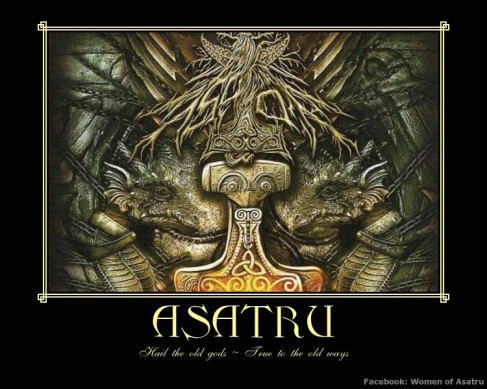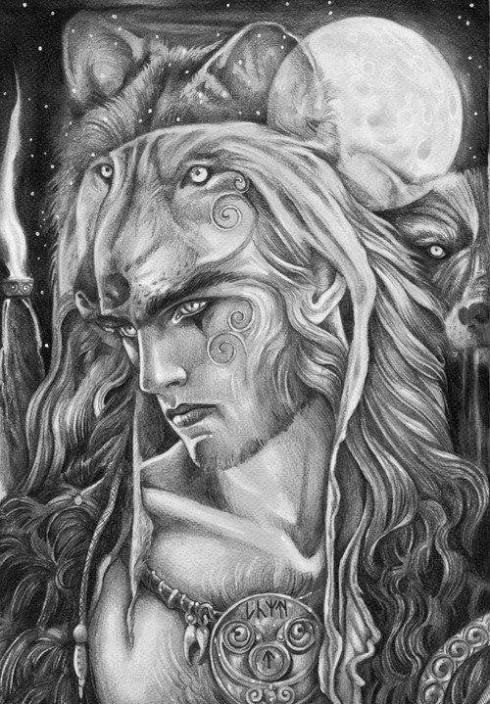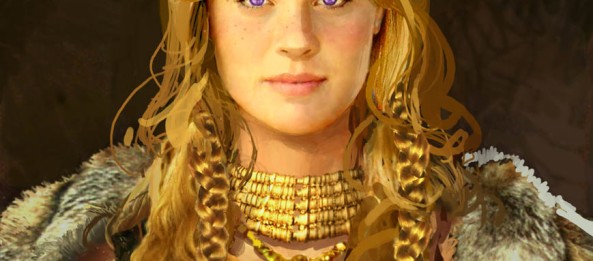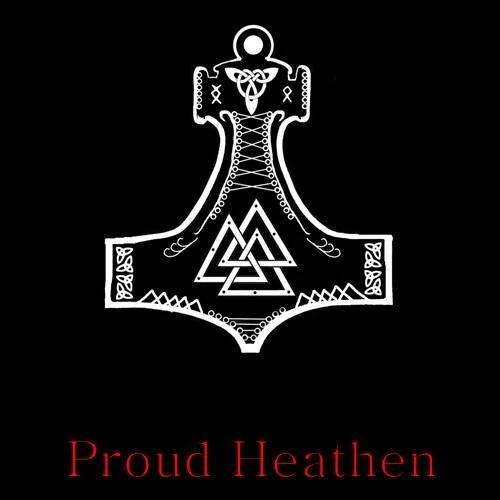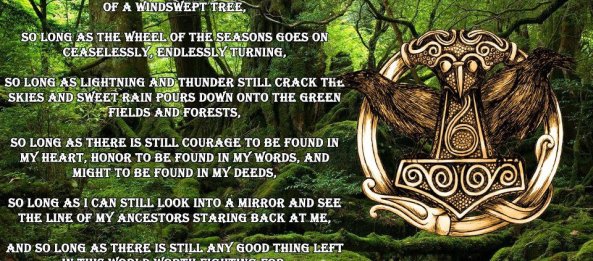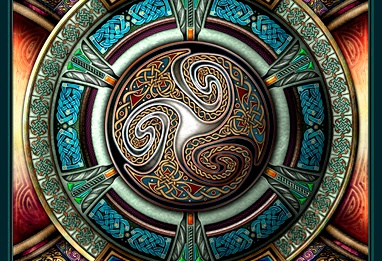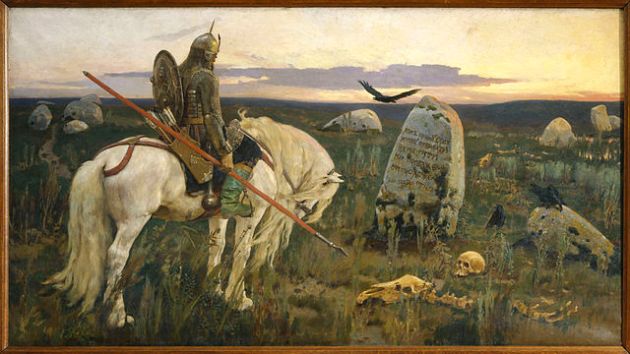How do I practice Asatru?
Here on this post, I’d like to address a question that comes up a lot. “How do I practice, or become, Asatru?”
Simply, there is no organization that you need to join. There are no commandments, though we do hold sacred actions that bring honor to ourselves and we work hard to bring a positive image to the community around us (this includes a personal presence online).
Many Asatruars choose to live by a code of honor called the Nine Noble Virtues, which act as a guide to accomplish living by this mindset. A good exercise for those who are new to Asatru, or even longtime practitioners, is to go through the Nine Noble Virtues and make notes of what they mean to you – and which ones you need to work on personally. The Nine Noble Virtues are listed as: Honor, Courage, Truth, Fideltiy, Discipline, Self-Reliance, Hospitality, Perseverance and Hospitality. Again, they are not commandments, they are a guide. In Asatru, we believe that “we are our deeds” and the outline of these virtues can help us stay on our path. They were originally written down in the 1970’s, adopted from principles and attributes that were found to be those reflected by the gods themselves.
The gods understand, and are very aware, that we are humans. We have flaws, independence, our own thoughts, goals, passions, and dreams. Since honor is the foundation on which we base our beliefs and standards, we recognize that we will “mess up” from time to time. When we do, we try to make things right as soon as possible with any person whom we have wronged. We own our actions and do not make excuses for bad behaviors that have landed us in hot water. We accept the price and will work to pay for our misdeeds. This is known as “weregild” – a form of repayment for a crime against another. Weregild is usually equal, or greater, in value to the misdeed committed. Asatruars try their best not to leave mistakes unresolved.
While there are no absolute texts to read, a good place to start is with the Prose and Poetic Eddas. Originally written and translated by Snorri Sturluson, the Eddas are written based off of oral lore about the gods. Snorri was a Christian, and though he tried his best to accurately reflect these stories it is doubtful that he was able to do so in a completely unbiased way. Years later, the Norroena Society spent six years with thirty scholars to go back through the Eddas and remove the Christian influence that was found in Snorri’s translation, and composed “The Asatru Edda: Sacred Lore of the North” that kept the Proto-Germanic originality intact. It preserved the lore while restoring the original tone that would have been used by the Germanic people at the time they were given. Whatever translation you choose, and there are many, reading the Eddas provide insight into the lore that explains the attributes, details, and history of our gods. From there, you can choose from a variety of books that appeal to you on the subject of lore, runes, seidr, Norse culture, Norse mythology, and folk traditions. Many books exist both in pdf format and online for purchase. Take a moment to review our “Bibliography” tab at the top of the site for a few starting ideas.
You do not need to be proficient in using the runes to be Asatru. Learning the runes is a process that takes some people years, or even a lifetime, to study and grasp. If you feel a call to study them, do it, and trust your intuition. Study them at a pace that is comfortable for you, and it can be helpful to seek out a mentor that can direct you. We call rune experts Vitke’s (pronounced Vit-key). Having an experience mentor can provide you with an ear of understanding and help encourage you along the way, as well as provide a valuable resource for continued learning.
Read through our site about the holidays and traditions we celebrate (these can be found in the tabs at the top of the page). You will also find information on holding a blot – a sacred time that we use to honor the gods and give thanks to them.
Get to know the gods by reading their stories and meditating on them. Draw on the lore for study purposes, but also put time into your thoughts about what those stories mean to you personally. Do you see strengths and weaknesses that you can relate to? Do you feel a particular “call” from a certain god? Meditating on each of them can help answer those questions. Don’t feel rushed, and always proceed at your own pace.
A note on Folkish vs Universalist: It is not necessary to pick a side so to speak. You, and everyone else in the world, should be proud of who they are and wherever they hail from. Purple, black, white, green, antennas, polka-dots, dark, light, etc.. Your ancestors fought and worked so that their family line could continue – which resulted in YOU being here at this time and place. Be proud of them. Be proud of you. Some people use the words “folkish” or “universalist” to separate themselves into categories. Our virtues are our virtues. Our guidelines for living are fairly straightforward. If you commit yourself to a life of living honorably and making a positive contribution to yourself, home, and community then you are following the principles that are set forth in Asatru. No matter which religion someone claims, there is never a reason to degrade, shame, or otherwise be a jerk. No one is perfect. We are all eternal students in life until the day we die. This is known as “the human condition” and it is one that should be kept in mind. If we believe in freedom, we must actively work to pursue and endorse it. Not just for some, but for all.
There are many online groups and pages on social media sites like Facebook that can provide you with a place to meet new people that practice Asatru. If you decide to use social media (blogs, Facebook, onine groups) to network and learn, be sure to scroll back through old posts as far as you can and ask yourself:
1) Are they contributing to Asatru in a positive way? What are they doing in the Asatru / Heathen community both online and in the “real world”?
2) Is there drama that they are causing? Don’t get sucked into someone’s personal issues.
3) What are their credentials? (send them a message and ask). Get to know the creator and admins of a site. Anyone that is teaching Asatru should be eager to answer your questions in a way that is both welcoming and informative. If their material on their page seems incomplete, or unreferenced, it should be a red flag. Reputable teachers of a faith, history, traditions, and the lore have spent years studying and learning. They may not have all the answers to your questions, but the answers they do give should sound verifiable, complete, and truthful.
4) What am I learning, or exposing myself to on this site? Does it reflect Asatru principles and virtues?
Asking these questions will help you avoid those who have a personal bias, political agenda, or otherwise are misinforming or making a mockery of our faith and virtues. It’ll also save you headache and time later on.
You do not need to be a member of a kindred or hearth. Kindreds can be an awesome, and powerful, way of connecting with others that share the Asatru faith. They can provide family, friendship, and personal bonding that is unlike any other connection. However, there may not be a local kindred in your area, and that’s alright. You can find a group of like-minded heathens to get together OR you can choose to remain solitary in your faith. Either is fine, it is the intent and coming to the gods to honor and thank them that is most important.
If you have any other questions, please feel free to drop by our Facebook page, Women of Asatru, and send us a message. We try to respond to all questions and inquiries within 24 hours so don’t be shy. We’d love to meet you!
